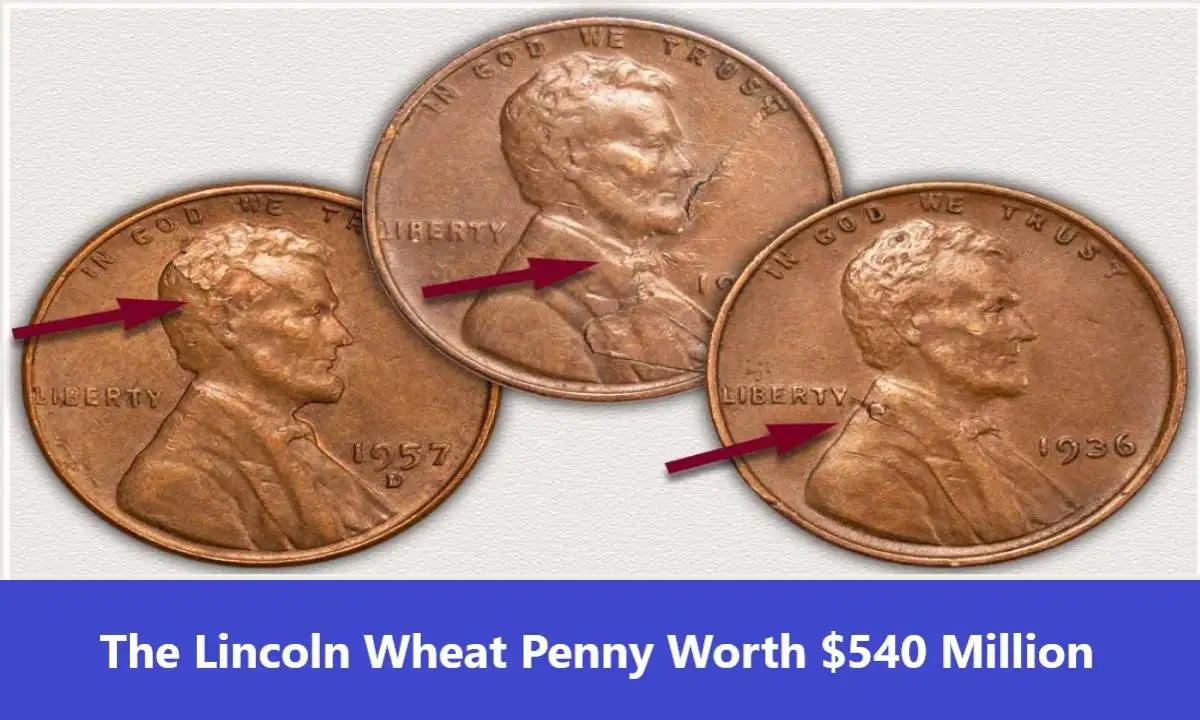The Lincoln Wheat Penny is a testament to the idea that even the smallest items can hold immense historical and monetary value. While most Wheat Pennies are worth only their face value or slightly more, certain rare versions—like the legendary 1943 Copper Wheat Penny—have skyrocketed in value, collectively estimated to be worth $540 million in the numismatic market. If you’ve ever tossed a penny into a jar, it might be worth giving those coins a second look. Who knows? You could be holding a life-changing treasure.
What Is the Lincoln Wheat Penny?
The Lincoln Wheat Penny was minted between 1909 and 1958, making it a significant piece of American coinage for nearly 50 years. It was the first U.S. coin to feature a real person, breaking the tradition of using symbolic figures like Liberty. The obverse of the coin bears the profile of President Abraham Lincoln, while the reverse showcases two wheat stalks, representing America’s agricultural roots—hence the nickname “Wheat Penny.”
Why Are Some Lincoln Wheat Pennies So Valuable?
Not every Wheat Penny is worth a fortune, but a select few versions are highly sought after for their rarity, historical significance, and unique characteristics. Here are the key reasons some Lincoln Wheat Pennies command sky-high prices:
1. The Legendary 1943 Copper Wheat Penny
During World War II, the U.S. Mint switched to using steel for pennies to conserve copper for military purposes. However, a small number of 1943 pennies were mistakenly struck on leftover copper planchets. These rare coins are among the most valuable in existence.
- Why It’s Special: Copper pennies from 1943 weren’t supposed to exist, making them extraordinary errors.
- Value: A single 1943 Copper Penny has fetched up to $265,000 at auction.
2. Condition Matters
Coins in pristine, uncirculated condition are significantly more valuable than those showing wear and tear. A Mint State (MS) coin graded MS-65 or higher can fetch a premium price.
3. Unique Errors
Minting errors like double dies, off-center strikes, and missing mint marks make coins more desirable. These mistakes are rare, adding a unique story to the coin’s value.
4. Rare Dates and Mint Marks
Certain dates and mint marks had low production numbers or unique features. For example:
- 1909-S VDB: Only 484,000 produced, featuring the designer’s initials.
- 1922 No D: A die error led to some pennies missing the Denver mint mark.
- 1955 Doubled Die: Features a doubling effect on the date and lettering.
How to Identify a Rare Lincoln Wheat Penny
If you’re curious whether you have a rare and valuable Lincoln Wheat Penny, here’s what to look for:
1. Check the Year
Any penny minted between 1909 and 1958 is worth closer inspection. Rare years like 1909-S VDB, 1914-D, and 1943 (copper) are especially valuable.
2. Inspect the Material
- 1943 Pennies: Perform a magnet test. Steel pennies stick to magnets, while copper pennies do not. A non-magnetic 1943 penny could be a treasure.
3. Look for Mint Marks
- “D”: Denver Mint
- “S”: San Francisco Mint
- No Mint Mark: Philadelphia Mint
4. Condition and Luster
- Red (RD): Original mint luster, most valuable.
- Red-Brown (RB): Slightly faded luster, still valuable.
- Brown (BN): Fully oxidized, less valuable but still collectible.
What to Do If You Think You Have a Valuable Coin
1. Consult an Expert
Reach out to a professional numismatist or coin dealer for an evaluation. They can help verify the coin’s authenticity and rarity.
2. Get Graded
Submit your coin to a grading service like PCGS (Professional Coin Grading Service) or NGC (Numismatic Guaranty Corporation). A certified grade enhances the coin’s credibility and market value.
3. Preserve Its Condition
Store the coin in a protective holder or temperature-controlled environment. Avoid cleaning it, as this can reduce its value.
The Fascination with Lincoln Wheat Pennies
The appeal of Lincoln Wheat Pennies lies not just in their monetary value but also in their historical significance. These coins witnessed pivotal moments in American history, from World War I to the Great Depression and World War II. Each penny tells a story of the era in which it was minted.
Educational and Historical Value
- Wartime Production: The 1943 steel pennies and rare copper pennies reflect America’s resourcefulness during WWII.
- Cultural Symbolism: Lincoln’s profile and the wheat stalks symbolize leadership and abundance, capturing the essence of the American spirit.
Conclusion
The Lincoln Wheat Penny is more than just a coin—it’s a piece of American history, a work of art, and, for a lucky few, a potential fortune. Whether you’re an avid collector or simply someone with a change jar, it’s worth taking a closer look at these iconic coins. From the rare 1943 Copper Penny to the 1955 Doubled Die, each Wheat Penny offers a unique blend of history and mystery.
So, the next time you sift through your loose change, pay attention to those humble pennies—you might just uncover a treasure worth millions. Keep an eye out, because history might be hiding in plain sight.
